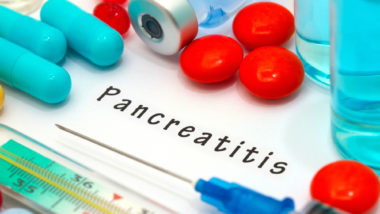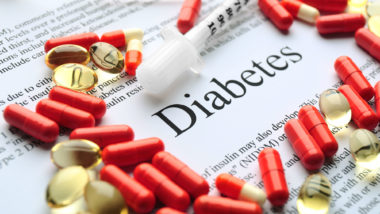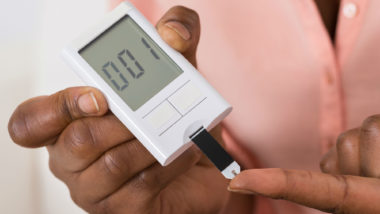
Farxiga (dapagliflozin) and Jardiance (empagliflozin) are drugs used to help treat diabetes. They are part of a class of drugs called sodium-glucose co-transporter2 (SGLT2) inhibitors. Though they may help many people manage diabetes, the advantages of taking the drugs may be outweighed by the risks of taking Farxiga or Jardiance.
What are the side effects of taking Farxiga?
RxList notes that common Farxiga side effects may include genital yeast infections, urinary tract infections, urination changes, sore throat, stuffy or runny nose, back pain, nausea, influenza, constipation, increased cholesterol, and pain in the extremities.
RxList also notes that there are some less common, adverse side effects, including kidney damage, ketoacidosis, hypoglycemia, serious genital infections, and bladder cancer.
Additionally, research suggests that taking Farxiga and Jardiance may increase a patient’s risk of requiring a lower limb amputation. This is especially concerning since lower limb amputation is one of the complications of diabetes that Jardiance and Farxiga are meant to treat.
Possible Farxiga, Jardiance Amputation Risk
A recent study reported that use of SGLT2 inhibitors like Jardiance and Farxiga may increase patients’ risk of lower limb amputation. Requiring lower limb amputation can be a result of diabetes itself, and diabetes treatments like Jardiance and Farxiga aim to prevent this kind of side effect. This research made the news late last year, and was covered by sources including ABC News and Medscape.
In an unfortunate twist, this new study reported that SGLT2 inhibitors may double a diabetes patient’s amputation risk. Reportedly, the risk of a lower limb amputation was doubled in those taking SGLT2 inhibitors when compared to those not taking the diabetes drug.
However, other clinical trials did not show this amputation risk for Jardiance and Farxiga, so more research may be needed to further understand the possible dangers.
Researchers noted that “although we used a strict study design and accounted for a large number of patient-related variables in our analyses, the results could be affected by unmeasured differences in characteristics of the patients receiving SGLT2 inhibitors versus the comparator drug.”
One researcher also notes that the presence of possible unmeasured variables “is always the case with observational studies and the reason why findings from such studies should be considered with caution.”
Mechanism of SGLT2 Inhibitors Could Increase Amputation Risk
A Scandinavian study of almost 35,000 patients with type-2 diabetes published in The BMJ found that patients taking SGLT2 inhibitors could experience a nearly doubled risk of lower limb amputations when compared to patients who were taking GLP1 receptor agonists.
According to CardiovascularBusiness.com, senior researcher Bjorn Pasternak, MD, PhD, wrote “Case reports to the U.S. FDA Adverse Event Reporting System have indicated that SGLT2 inhibitors could cause diabetic ketoacidosis, acute kidney injury and serious urinary tract infection,” Pasternak and coauthors wrote. “SGLT2 inhibitors increase blood viscosity by inducing mild diuresis, which suggests that the risk of venous thromboembolism could be increased.”
Basically, SGLT2 inhibitors cause increased urination to rid the body of excess sugars, which could place the body at risk of dehydration. As a result, dehydration causes blood to thicken, which increases the risk of blood clots and decreases circulation. Sluggish circulation prevents adequate blood flow from reaching the ends of the limbs, particularly the feet and toes.
Pasternak’s study compared data of 17,213 patients with diabetes in Sweden and Denmark who recently began taking SGLT2 inhibitors with 17,213 patients with diabetes who were prescribed GLP1 receptor agonists.
For clarification, GLP1 receptor agonists include exenatide, dulaglutide, lixisenatide and liraglutide, which are medicines that mimic the chemical that causes the pancreas to produce insulin after you eat to keep glucose levels in the normal range. The medicines are available as injections and can last for hours or days.
Ketoacidosis, Another Risk of SGLT2 Drugs
The same study that showed a possible increase in amputation risk also indicated that Jardiance and Farxiga patients had a doubled risk of ketoacidosis.
Ketoacidosis is a serious complication of diabetes that results when a patient’s body produces a high level of blood acids, known as ketones. This condition develops when a patient can’t produce enough insulin.
Based on these new discoveries, Farxiga patients may wonder if these drugs are helping to treat diabetes or making possible complications of the disease worse. Many consumers argue that drug companies have a duty to not expose the public to unreasonable levels of risk, and some may argue that increasing a risk associated with a disease instead of reducing it may be considered as such.
Understanding Basic Information About Adult-Onset Diabetes
According to the American Diabetes Association, type-2 diabetes—which SGLT2 inhibitors are used to treat—is the result of the body failing to use the insulin it makes correctly. The disease comes on usually in middle age but can also raise its ugly head in the early adult years.
The organ responsible for creating insulin which drives blood glucose from the circulatory system into the muscles for use is the pancreas. When the disease first starts, the pancreas might make an excess of insulin to compensate for the inefficiency with which the body is using the hormone. As it progresses, the organ has difficulty managing to make enough to keep blood sugars within a normal window.
The ADA says that cells can be starved for needed sources of energy when glucose lingers in the blood rather than be successfully hormonally-driven within their reach. Secondly, high blood sugar levels can harm the patient’s vision, cardiac function, renal function, and nervous system over time.
The most common first line of treatment for the initial signs of type-2 diabetes are lifestyles changes. This include a regular exercise program, participation in a weight loss program if needed, and elimination of many simple carbohydrates included in the diet.
Emphasis is placed on refraining from refined sugars, white rice, white bread, and desserts. Patients are encouraged to focus on a meat and vegetable diet if possible, with fruits for the occasional treat. Later, oral and injectable medications may be added to increase the effectiveness of controlling type-2 diabetes.
The disease is common in older Americans from every ethnic group, but specifically, African Americans, Native Americans, Latino Americans, Asian and Pacific Islander Americans are more predisposed overall, according to the ADA.
If you or a loved one experienced diabetes amputation after taking Jardiance or Farxiga, you may have a legal claim and may be eligible to seek compensation from the drug maker for your medical and other expenses. Fill out the form on this page now to see if you qualify!
ATTORNEY ADVERTISING
Top Class Actions is a Proud Member of the American Bar Association
LEGAL INFORMATION IS NOT LEGAL ADVICE
Top Class Actions Legal Statement
©2008 – 2025 Top Class Actions® LLC
Various Trademarks held by their respective owners
This website is not intended for viewing or usage by European Union citizens.
Get Help – It’s Free
Join a Free Jardiance, Farxiga Diabetes Amputation Class Action Lawsuit Investigation
If you qualify, an attorney will contact you to discuss the details of your potential case at no charge to you.
If you took Invokana or Invokamet, you do not qualify for this investigation. Click here to join a separate class action lawsuit investigation.
PLEASE NOTE: If you want to participate in this investigation, it is imperative that you reply to the law firm if they call or email you. Failing to do so may result in you not getting signed up as a client or getting you dropped as a client.
E-mail any problems with this form to:
[email protected].
Oops! We could not locate your form.












